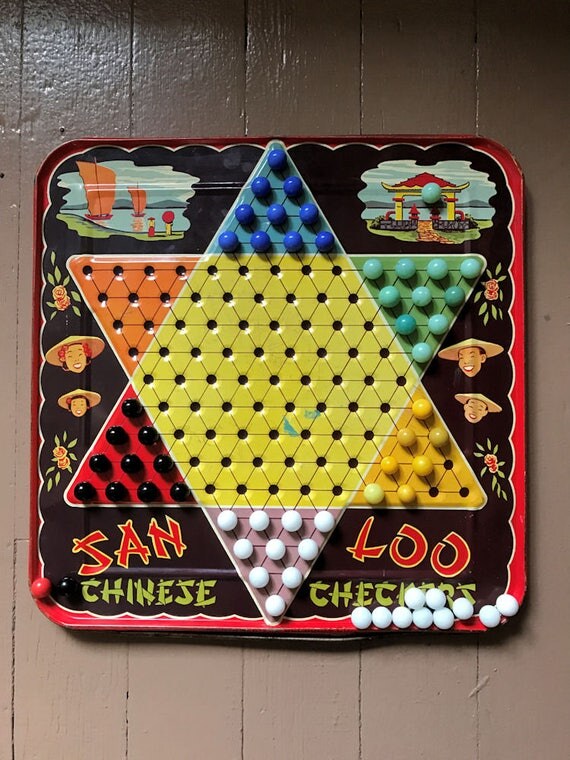
Of equal importance are the players' strategies for emptying and filling their starting and home corners. (Multiple-jump moves are obviously faster to advance pieces than step-by-step moves.) Since either player can make use of any hopping 'ladder' or 'chain' created, a more advanced strategy involves hindering an opposing player in addition to helping oneself make jumps across the board. If three sets are played, the pieces usually go into the opponent's starting corners.Ī basic strategy is to create or find the longest hopping path that leads closest to home, or immediately into it. If two sets are played, the pieces can either go into the opponent's starting corners, or one of the players' two sets can go into an opposite empty corner. If one set is played, the pieces usually go into the opponent's starting corner, and the number of pieces per side is increased to 15 (instead of the usual 10). In a two-player game, each player plays one, two, or three sets of pieces. If two sets are used, each player controls two differently colored sets of pieces at opposite corners of the star. If one set is used, pieces race across the board into empty, opposite corners. In a three-player game, all players control either one or two sets of pieces each. The four-player game is the same as the game for six players, except that two opposite corners will be unused. The remaining players usually continue play to determine second- and third-place finishers, etc. The first team to advance both sets to their home destination corners is the winner. When playing teams, teammates usually sit at opposite corners of the star, with each team member controlling their own colored set of pieces. Starting layouts Six players Ĭan be played "all versus all", or three teams of two. (In some instances a player may choose to stop the jumping sequence part way in order to impede the opponent's progress, or to align pieces for planned future moves.) It is not mandatory to make the most hops possible. Red might advance the indicated piece by a chain of three hops in a single move.

A hop consists of jumping over a single adjacent piece, either one's own or an opponent's, to the empty space directly beyond it in the same line of direction.

In the diagram, Green might move the topmost piece one space diagonally forward as shown. Turns proceed clockwise around the board. There is no capturing in Sternhalma, so pieces that are hopped over remain active and in play. A player may not combine hopping with a single-step move – a move consists of one or the other. Players take turns moving a single piece, either by moving one step in any direction to an adjacent empty space, or by jumping in one or any number of available consecutive hops over other single pieces. In "hop across", the most popular variation, each player starts with their colored pieces on one of the six points or corners of the star and attempts to race them all home into the opposite corner. (On bigger star boards, 15 or 21 pieces are used. Each player has 10 pieces, except in games between two players when 15 pieces are used.


The aim is to race all one's pieces into the star corner on the opposite side of the board before the opponents do the same. A single move can consist of multiple hops each piece hopped must be directly adjacent, and hops can be in any direction.


 0 kommentar(er)
0 kommentar(er)
